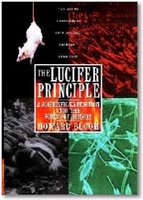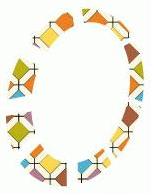Lucifer principle

Bloom ends his book 'The Lucifer Principle' with a chapter called the luciferian paradox: good and bad are the two sides of the medal of life. In my view, it is the paradox of creation revisited. We tend to think of creation as something good. Marketing people know that you can only sell something that is 'new', or 'improved', or 'with added power', and even reïntroduce the good'ol stuff as 'classic'. But every new creation is also the destruction of something old. So, perhaps to come to grip with it, we tend to think that old is bad. Bring in the new; the destructed had it coming. Most of the time we assume that there is a dilemma: either have something good ('create!) or something bad ('destroy'). We destroy something (bad) by creating something (good), therefore, we think, it is also the other way around: we can make something good, by destroying something bad. But we cann't. This is no dilemma, it is a paradox. Destruction is the child of creation and creation begets destruction. Lucifer means bearer of light, and this Lucifer has been thrown into the dark. But in the dark, the light only shines stronger.
The Luciferian paradox is also much like the Jungian paradox: the closer you get to the light, the larger the shadow. Good is the opposite of bad, not the negation. The negation of 'bad' is not 'good'; the negation of 'bad' is 'not bad'. The negation of 'good' is not 'bad', its is 'not good'. So you cannot tour continuously from 'good' to 'not good' = 'bad' to 'not bad' = good again. There is a gap the size of an endless regression. This is the conflictuous nature of paradox, this is what keeps us stuck and drives us.
This, I think, is the link between "The Lucifer Principle" and "Global Brain": the Luciferion paradox, the two sides of life, good and evil, alternate and 'causes' the four principles and the tournament. The endless regression of chasing our own tale (pun intended) is all in there is.


0 Comments:
Post a Comment
<< Home